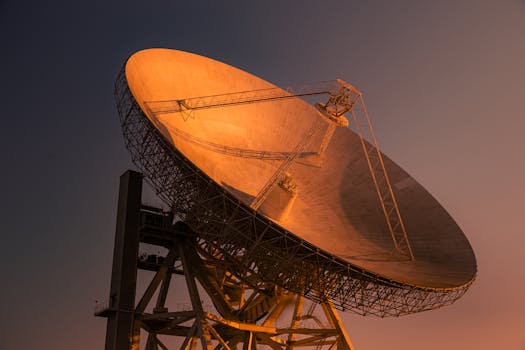Satellite Telecommunications 2023: Key Developments and What They Mean for the Industry

Satellite Telecommunications 2023: Key Developments and What They Mean for the Industry
Satellite Telecommunications 2023 has been a pivotal year for the industry, marked by numerous groundbreaking developments that are poised to revolutionize the way we communicate globally. As we delve into the key advancements of this year, it becomes evident that the satellite telecommunications sector is on the cusp of a significant transformation.
The satellite telecommunications industry has experienced tremendous growth over the past few years, driven by the increasing demand for high-speed internet connectivity, the proliferation of satellite-based services, and advancements in technology. This growth is expected to continue in the coming years, with the global satellite telecommunications market projected to reach $7.53 billion by 2027, growing at a Compound Annual Growth Rate (CAGR) of 9.8% from 2020 to 2027.
Advancements in Satellite Technology
Another significant development in satellite technology is the introduction of phased array antennas. These antennas enable satellites to dynamically steer and shape their beams, allowing for more efficient use of spectrum and increased capacity. Phased array antennas also provide improved interference mitigation and better signal quality, resulting in a more reliable and high-quality communication service.
5G Integration and the Role of Satellites
The integration of satellites with 5G networks is another critical development in the satellite telecommunications industry. Satellites can play a vital role in extending 5G coverage to remote and underserved areas, where traditional terrestrial infrastructure is lacking. By leveraging satellite-based backhaul, mobile network operators can provide 5G services to areas that would otherwise be difficult or expensive to reach.
The use of satellites in 5G networks also enables the provision of mission-critical communications services, such as emergency response and public safety. Satellites can provide a reliable and resilient communication link in areas where traditional infrastructure is damaged or destroyed, ensuring that critical communications services remain available during times of crisis.
Regulatory Environment and Spectrum Allocation
The regulatory environment and spectrum allocation are crucial factors that can impact the growth and development of the satellite telecommunications industry. In recent years, there have been significant developments in the regulatory framework governing the use of satellite spectrum, with a focus on enabling the growth of new satellite-based services.
The Federal Communications Commission (FCC) has played a key role in shaping the regulatory environment for satellite telecommunications in the United States. The FCC has implemented various initiatives aimed at promoting the development of new satellite-based services, including the adoption of rules for the use of small satellites and the allocation of new spectrum bands for satellite use.
Conclusion
In conclusion, the satellite telecommunications industry has witnessed significant developments in 2023, driven by advancements in satellite technology, the integration of satellites with 5G networks, and a favorable regulatory environment. As the industry continues to evolve, it is likely that we will see even more innovative developments and applications of satellite telecommunications technology.




